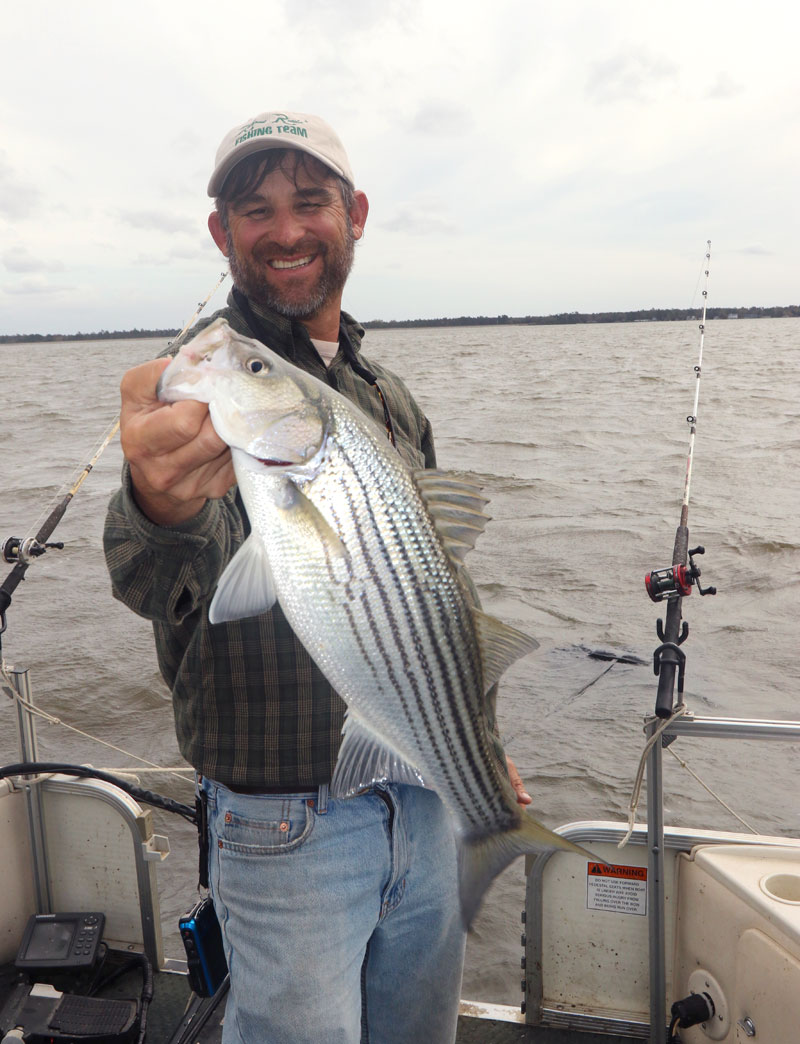
Catch your share with these tips
Colt Bass of Colt Bass Fishing said some of the best striper fishing at Lake Hickory takes place when the cooler weather lowers water temperatures.
“The ideal water temperature ranges from 60 to 75 degrees,” said Bass (www.coltbassfishing.com). “The fish will feed to fatten up for the winter months.”
Bass said once the water temperature drops into the 40s, the striper bite slows.
Hickory stripers generally run from 7 to 9 pounds. But Bass said some over 20 pounds have been taken during November.
Bass usually focuses on the lower end of the lake. Here, stripers linger in 5 to 35 feet of water around points, sandbars, rock shoals and humps. These structural features can be found with today’s side-scan sonar units.
Bass favors places that offer quick access to deep water. When forage is in the area as well, stripers move up to feed.
If he doesn’t know the precise location of the fish, he trolls bucktails on downriggers and leadcore lines off the sides and back of his boat.
He sets out a spread of four 7-foot medium Ugly Stik down rods holding Abu Garcia 6500 reels filled with 20-pound Berkley Big Game line. The rods are mounted horizontally in rod holders with lines coming off the sides of his boat.
Stripers stay on the move
The Carolina-style rigs are weighted with 1/2- to 2-ounce sinkers dictated by the strength of the wind and current with leaders of 17-pound fluorocarbon line. They’re completed with No. 1/0 to 4/0 circle hooks based upon the size of the bait.
“The hook size shouldn’t make the baitfish nose-dive unnaturally,” said Bass.
He favors 4- to 7-inch shad and herring. With the cold water, he doesn’t have to fret with constant bait changes since the baits remain lively for about an hour.
He completes his spread with four additional rods, positioned vertically in rod holders, using unweighted free lines with circle hooks. Some lines may be connected to Original Clear planer boards running out from the sides of the boat.
The depth of the planer board lines is determined by the length of line let out before clipping on the planer board. The more the line, the deeper the bait. And the less line, the shallower the bait.
The spread covers the water column from just beneath the surface to as deep as the stripers viewed on his electronics.
Bass avoids muddy water and cautions that stripers move constantly, so don’t commit to a spot or two.




Be the first to comment